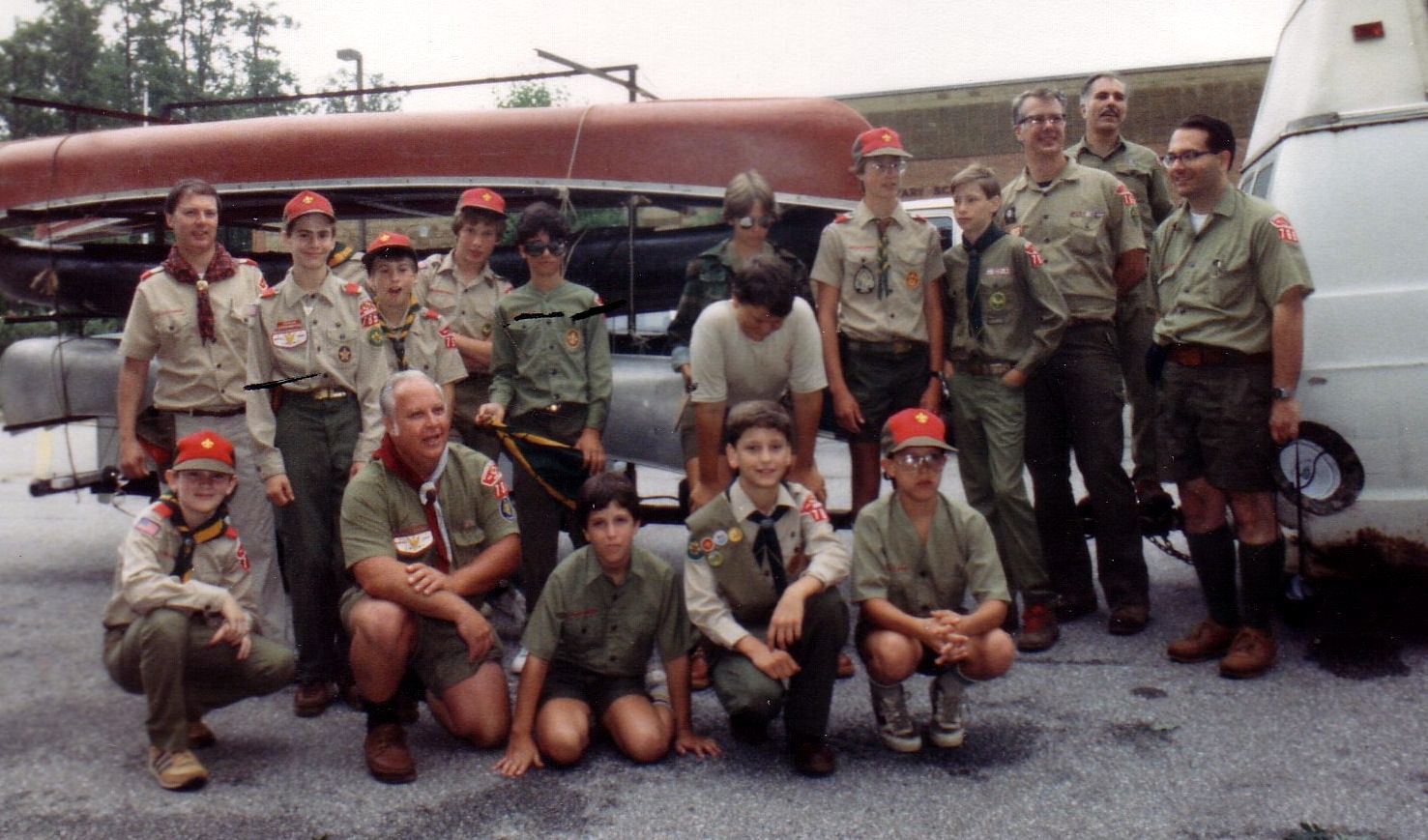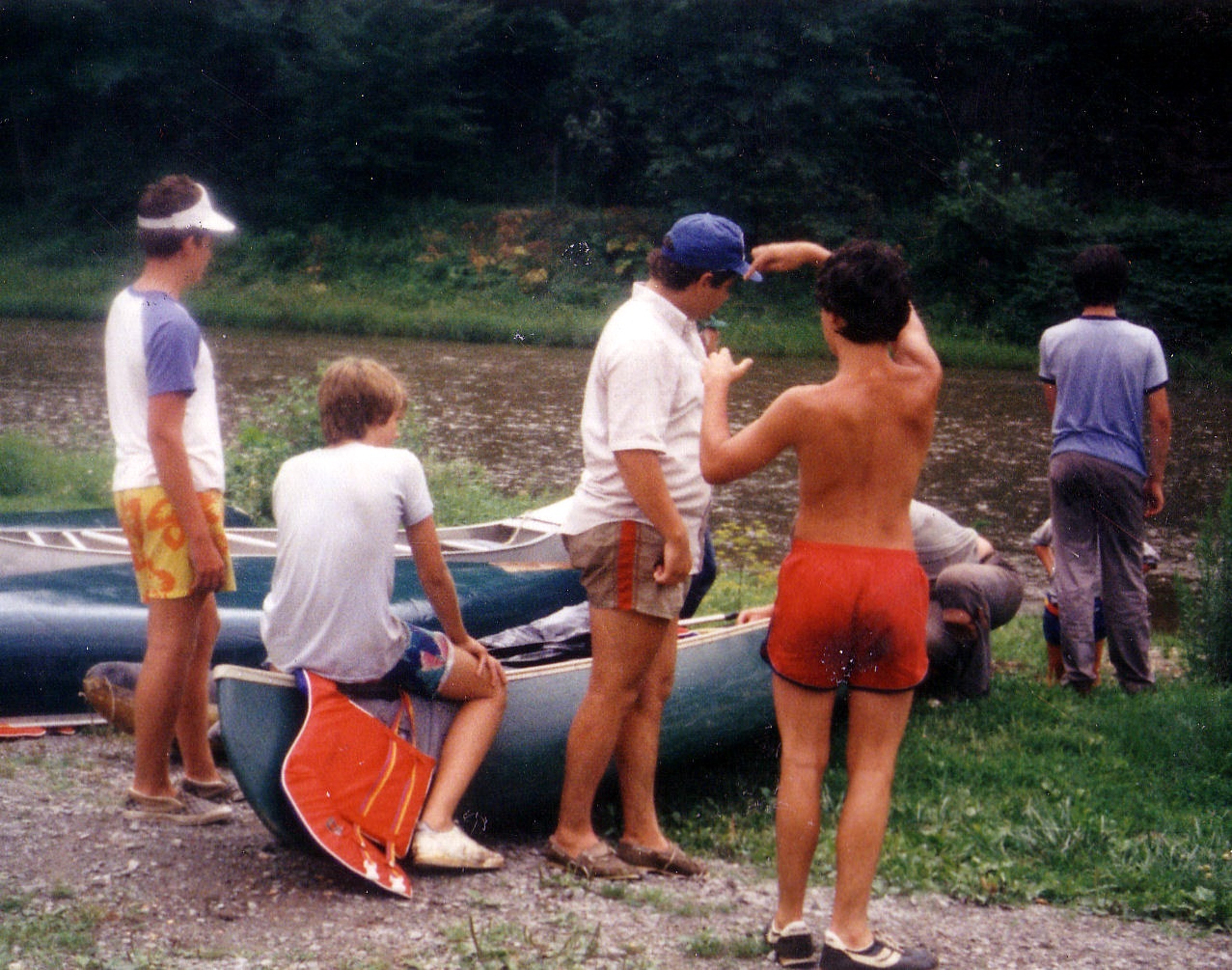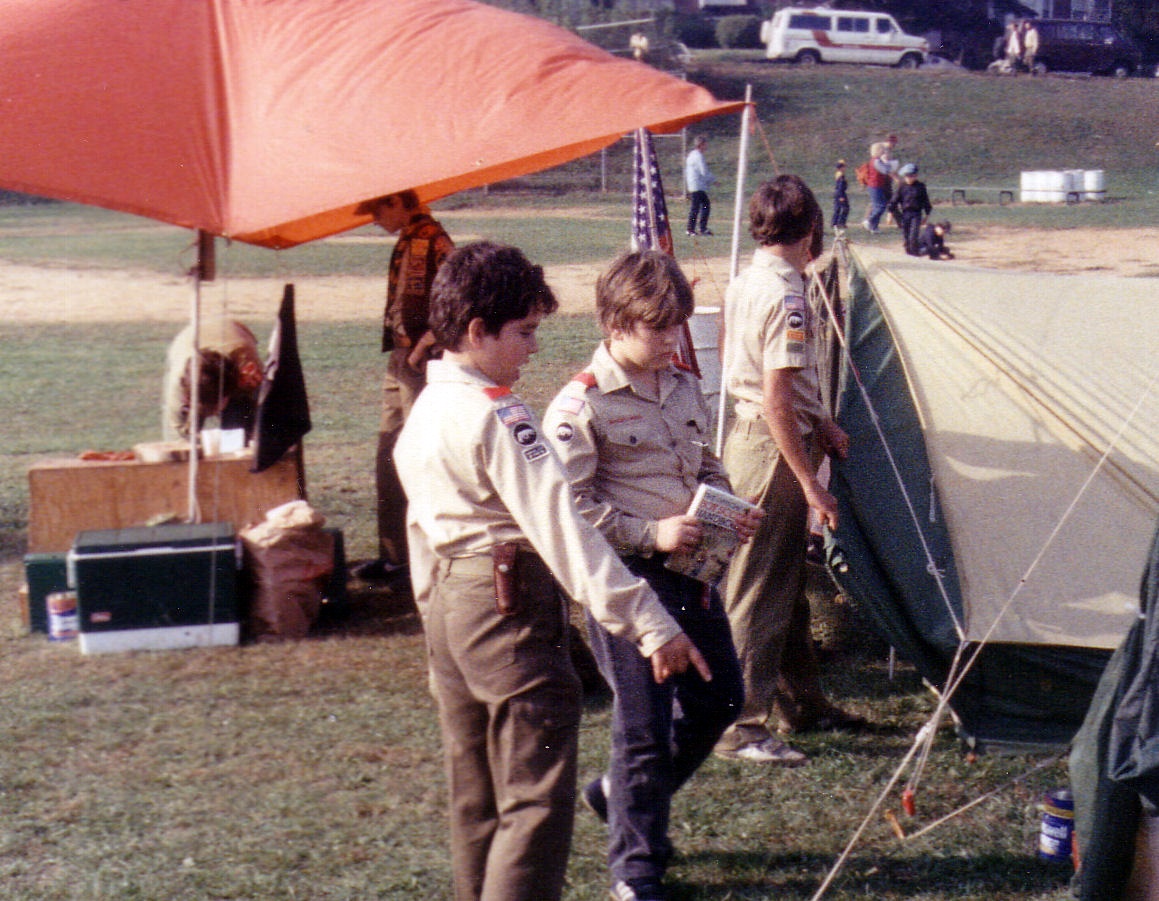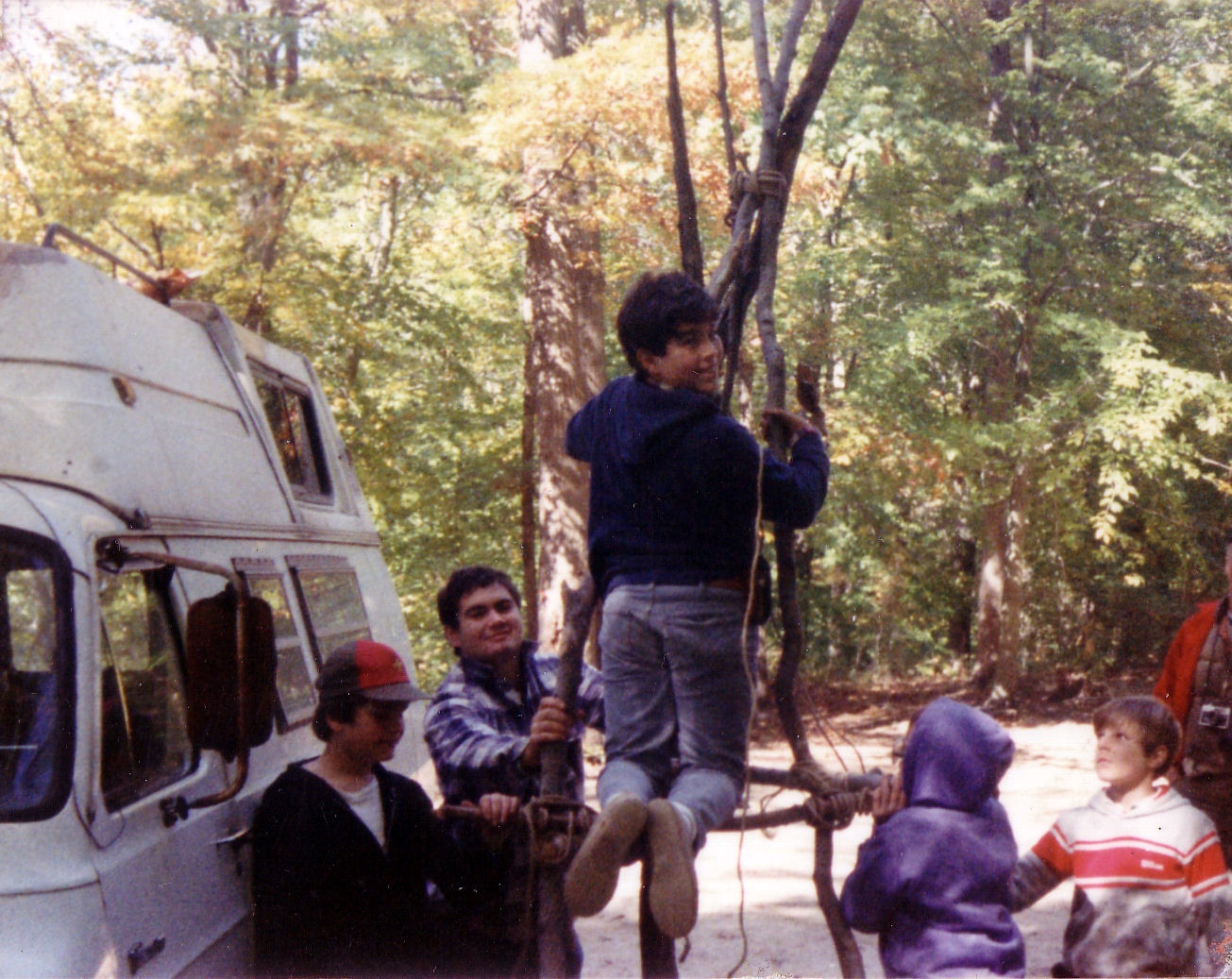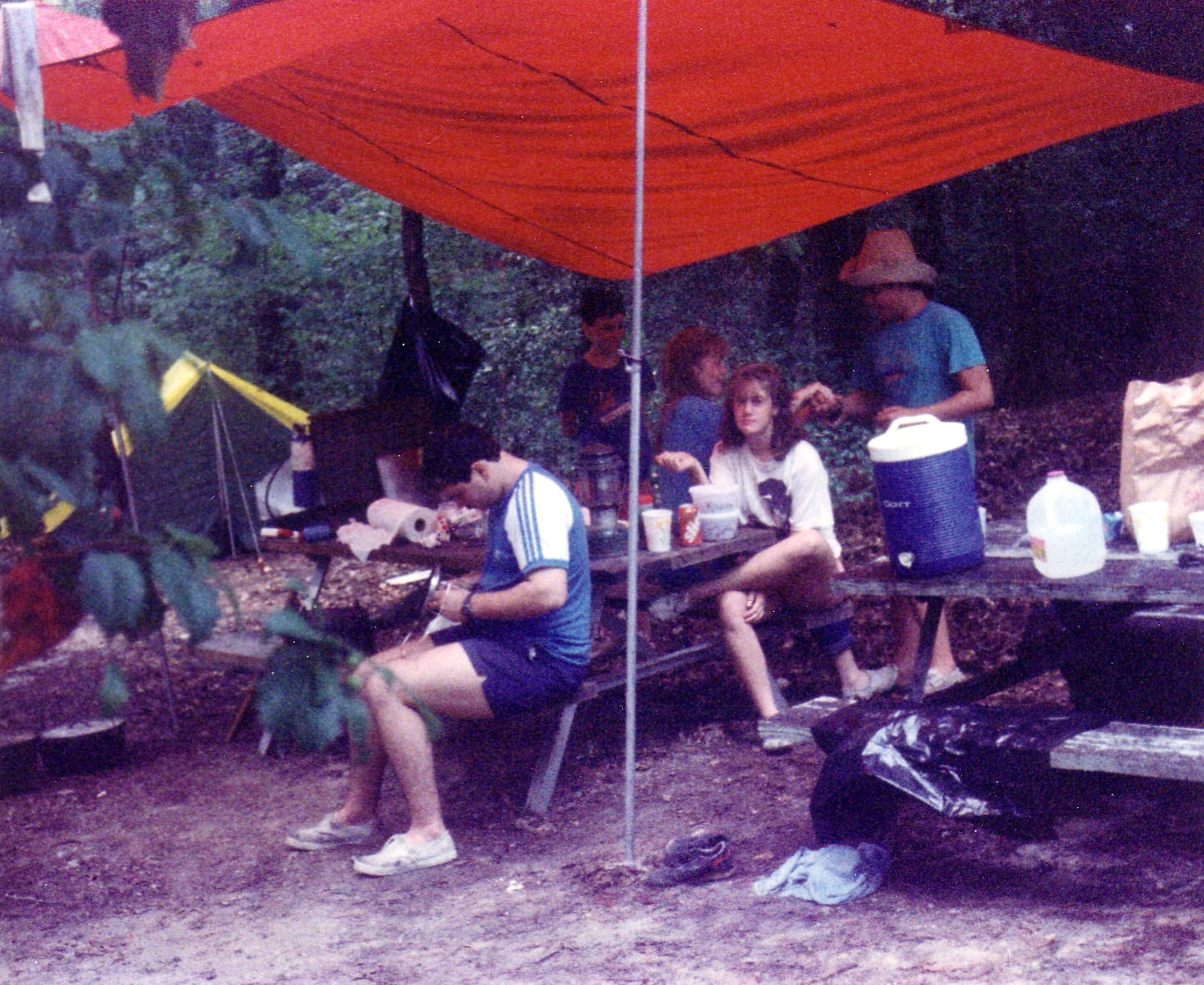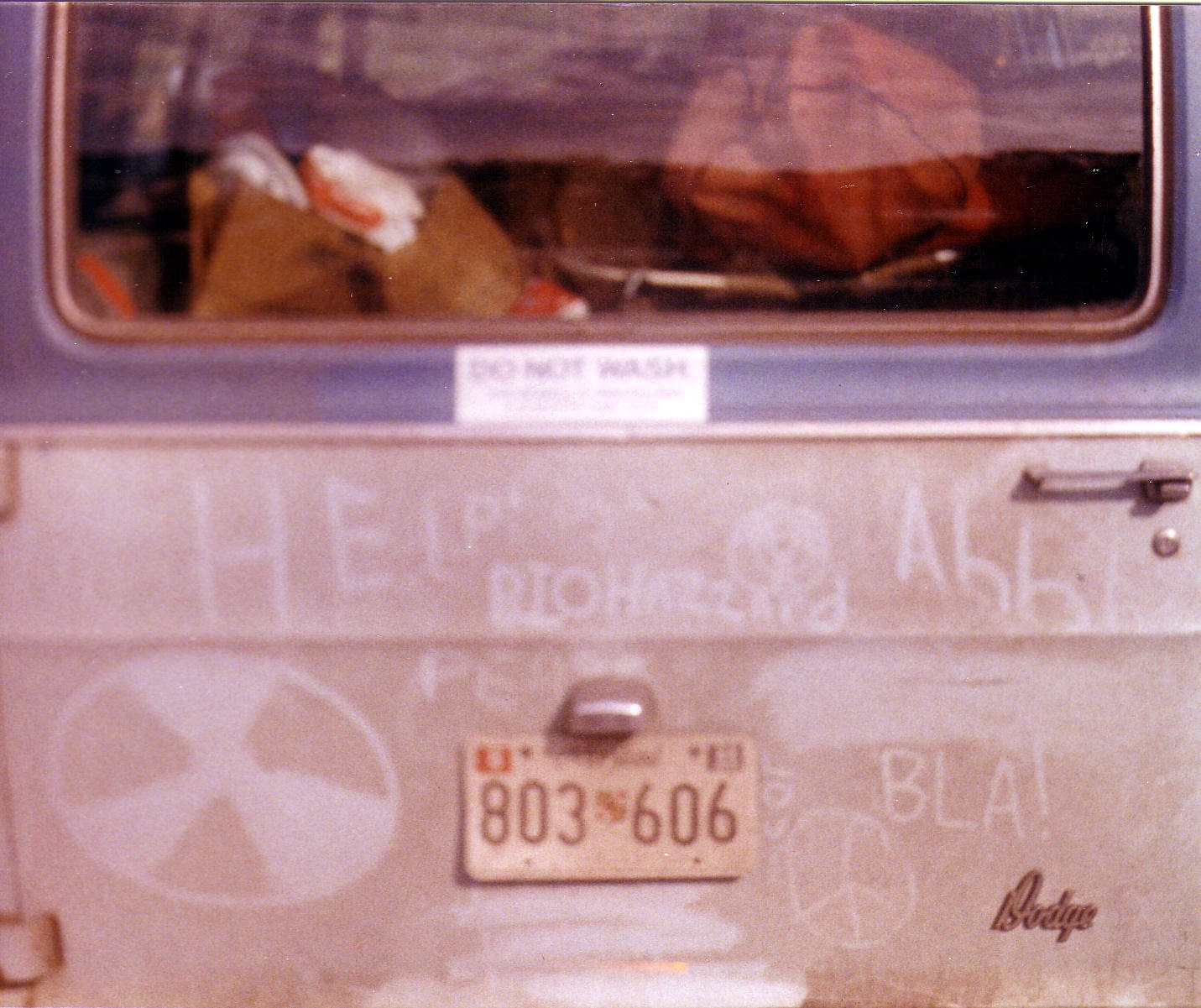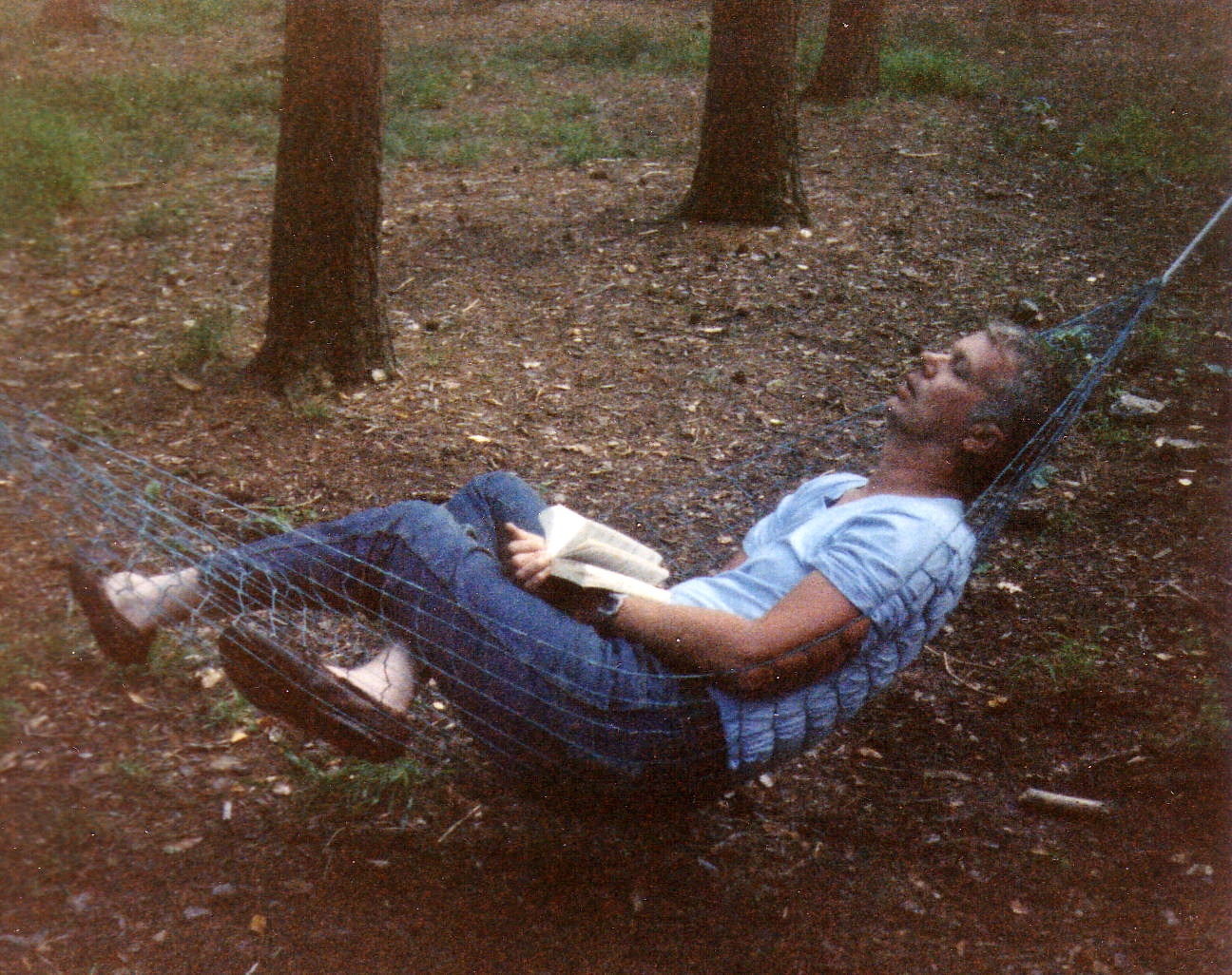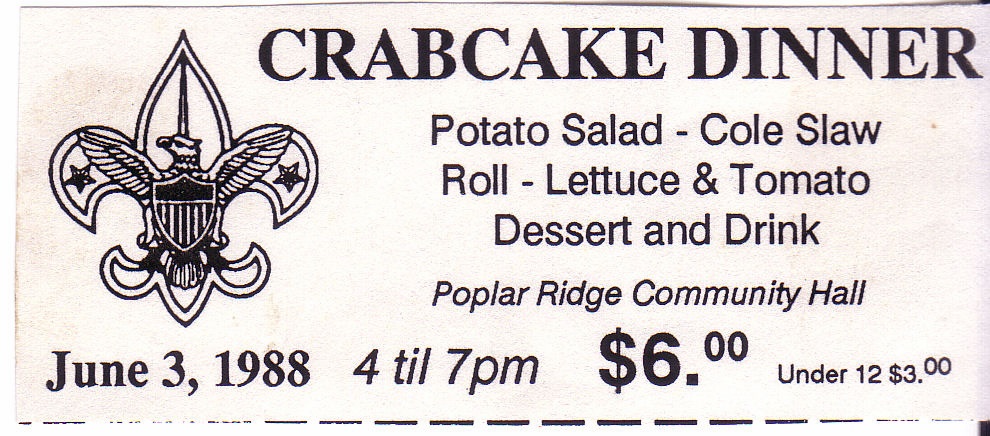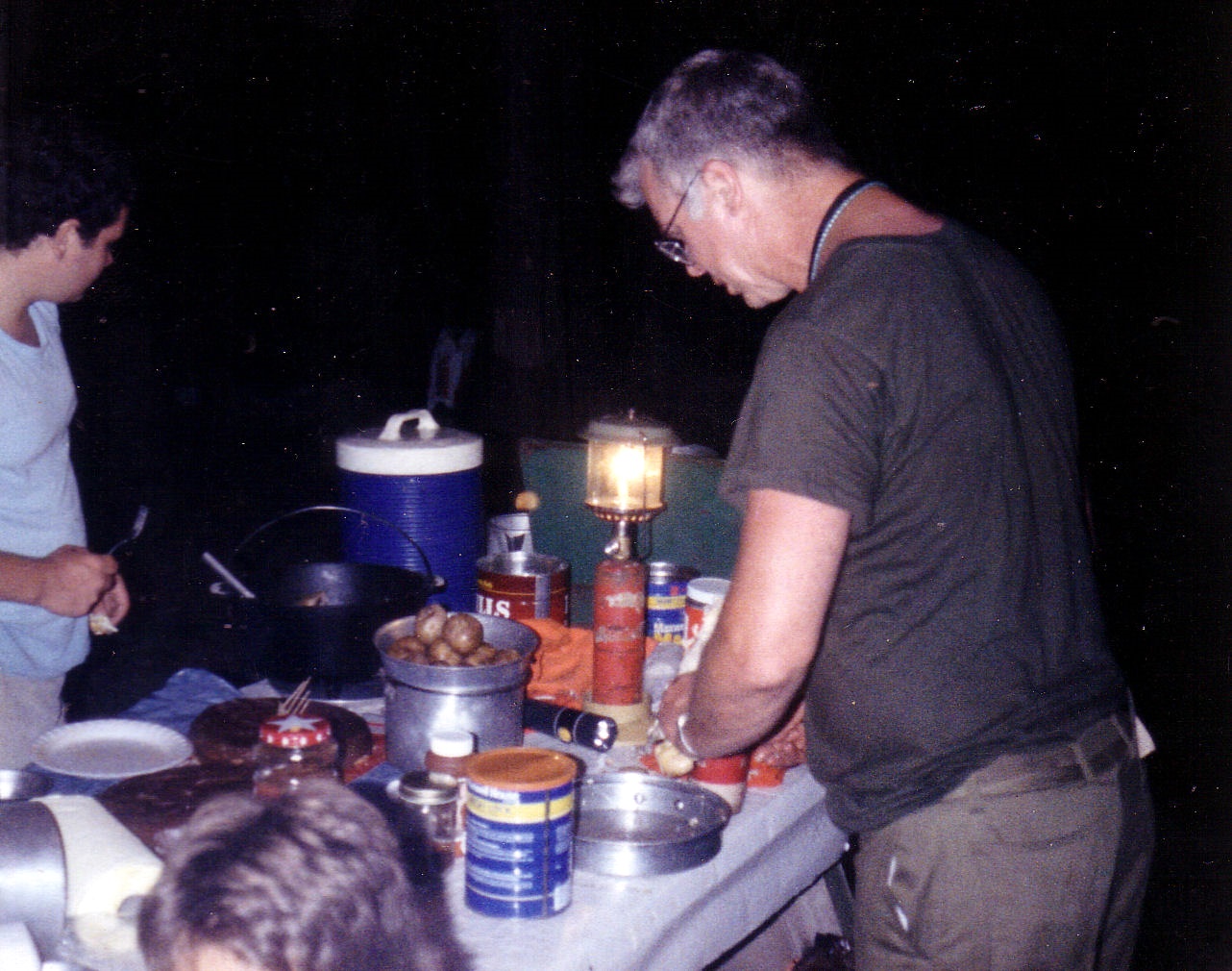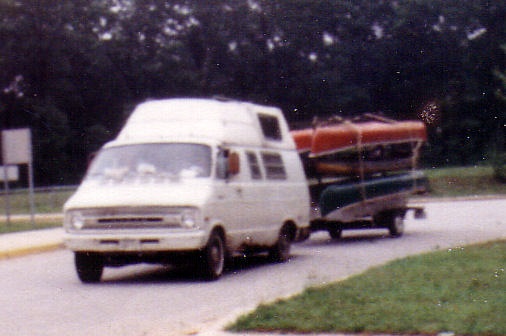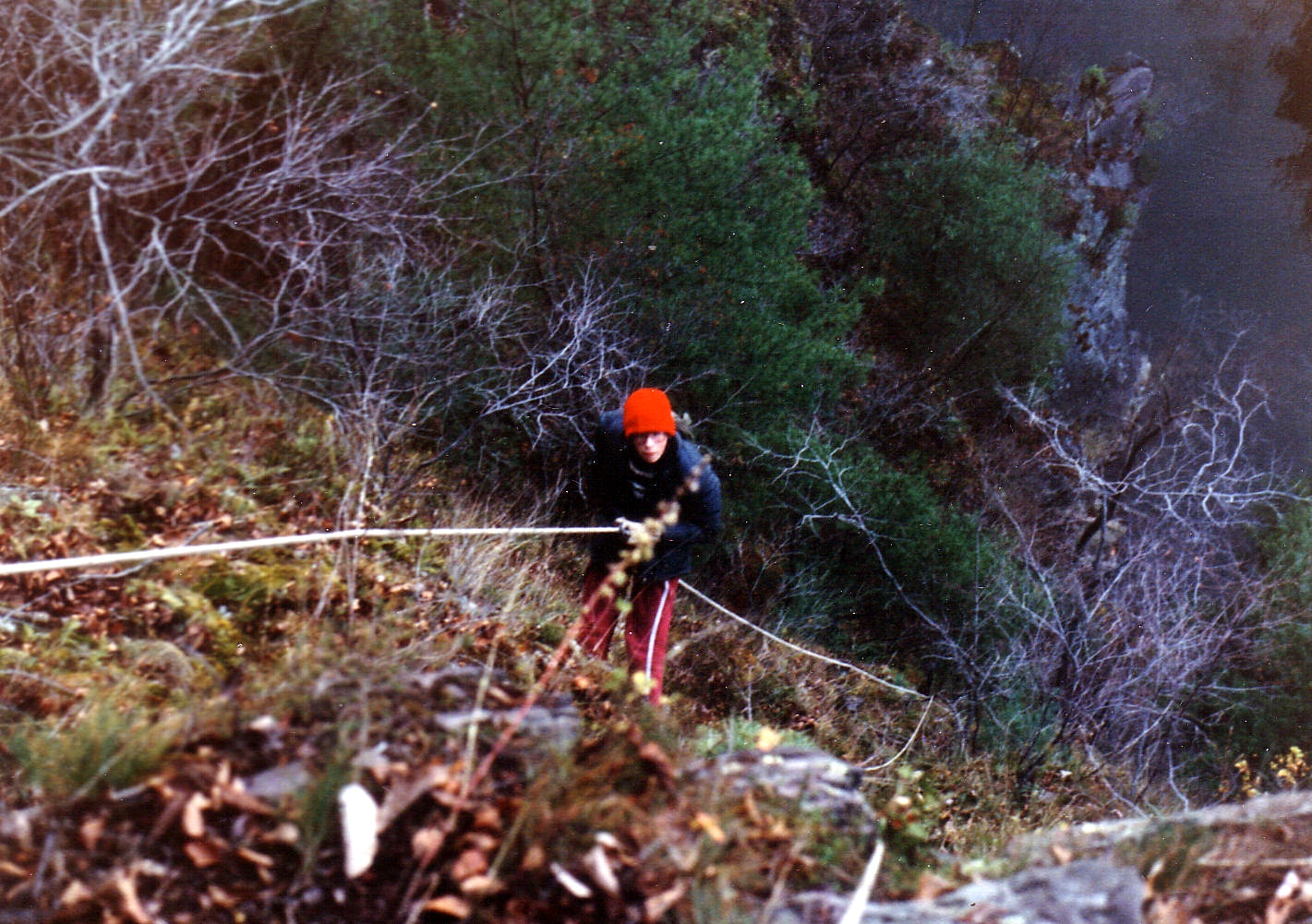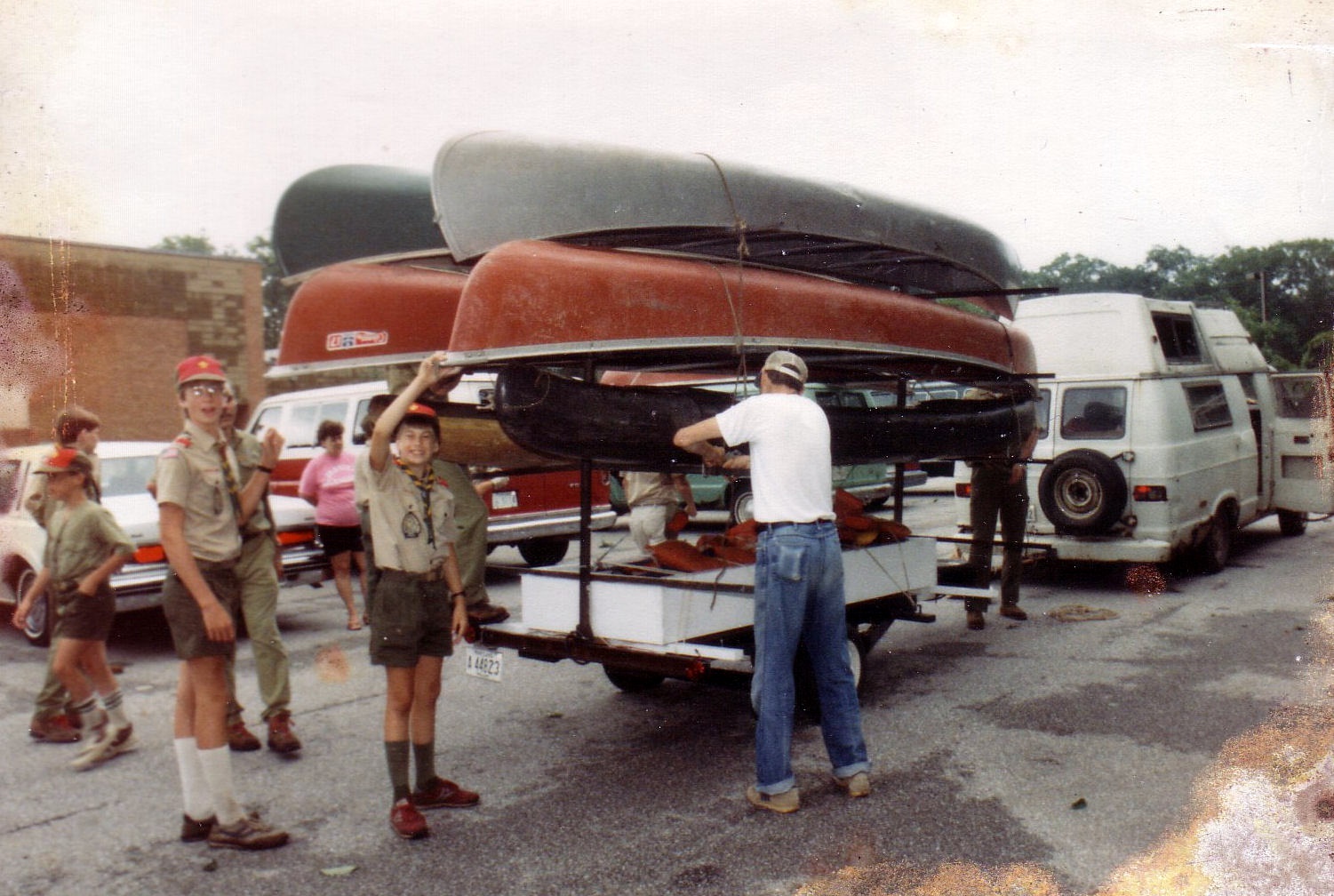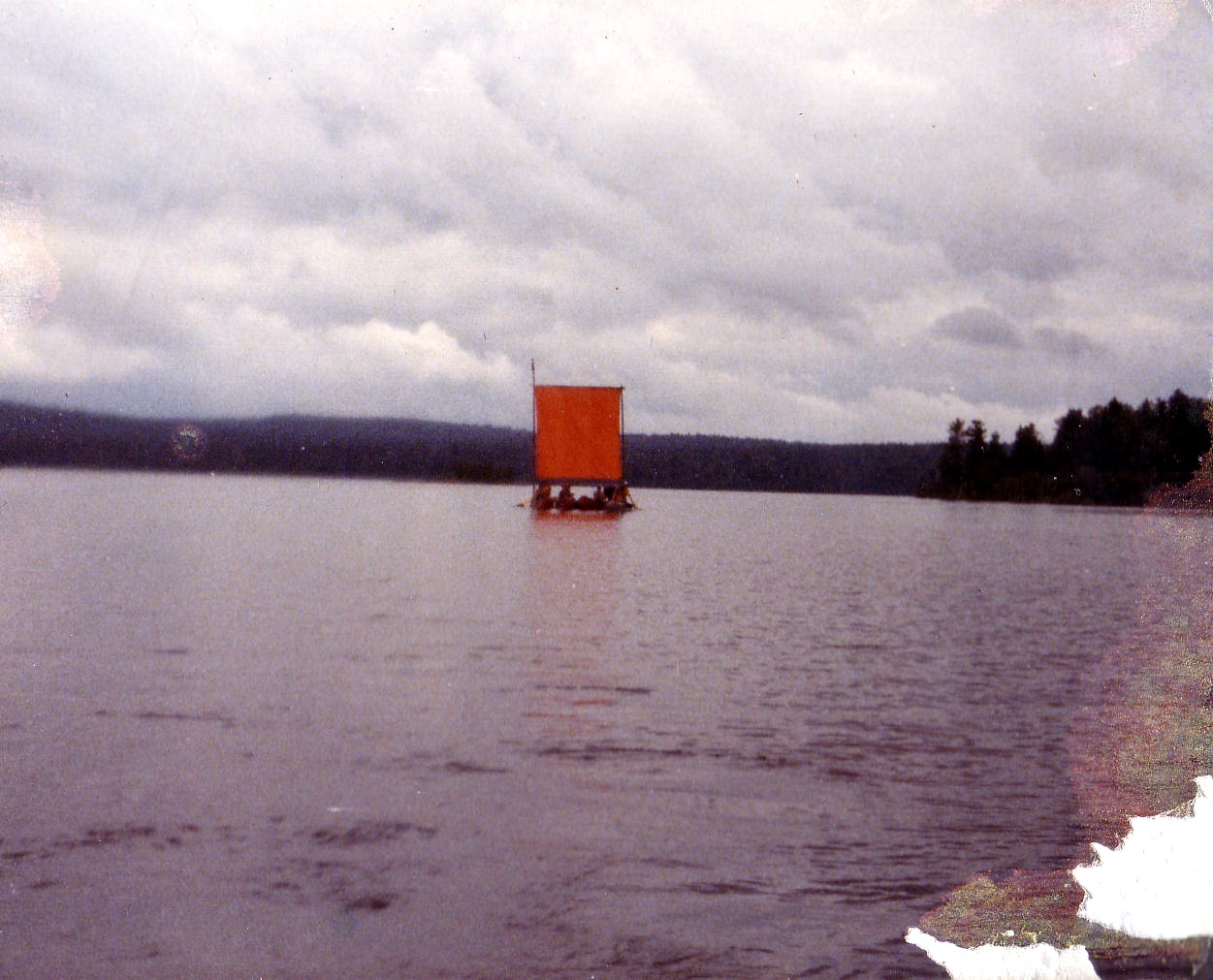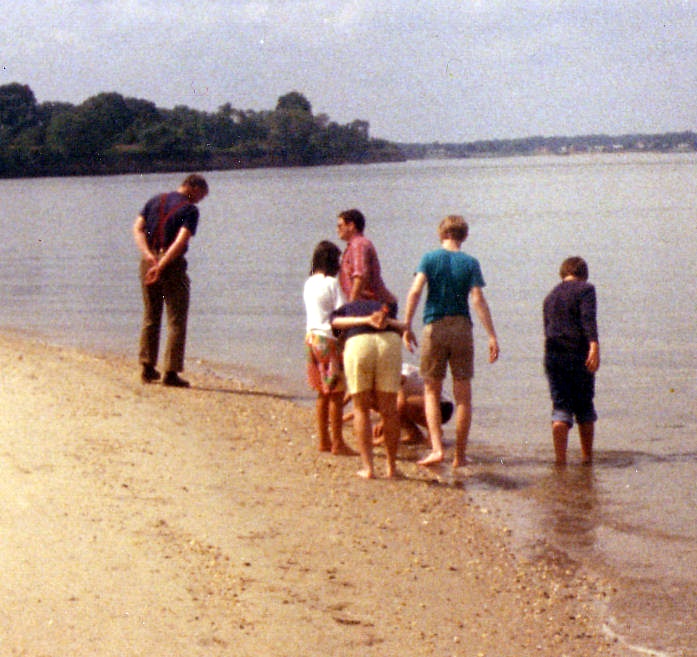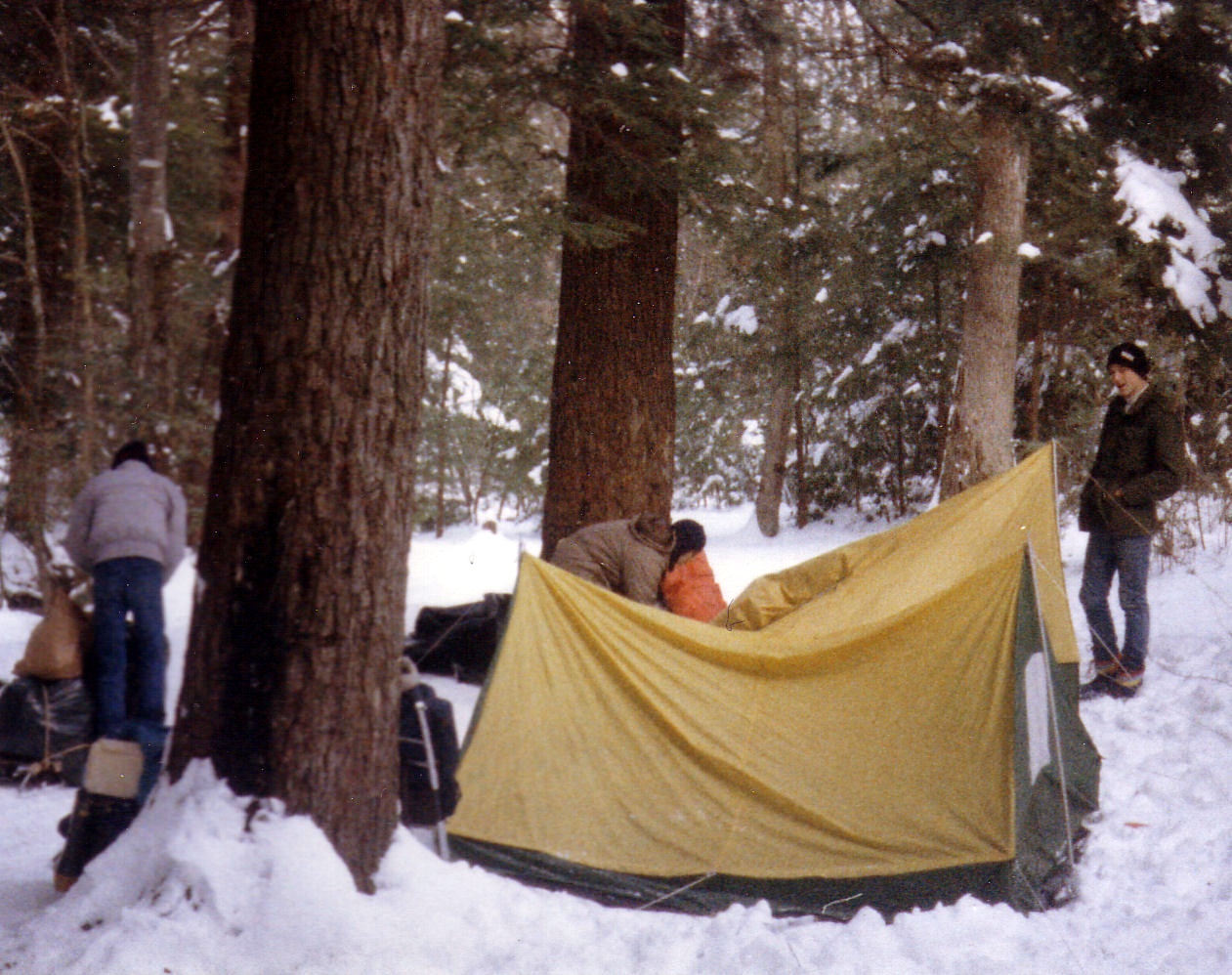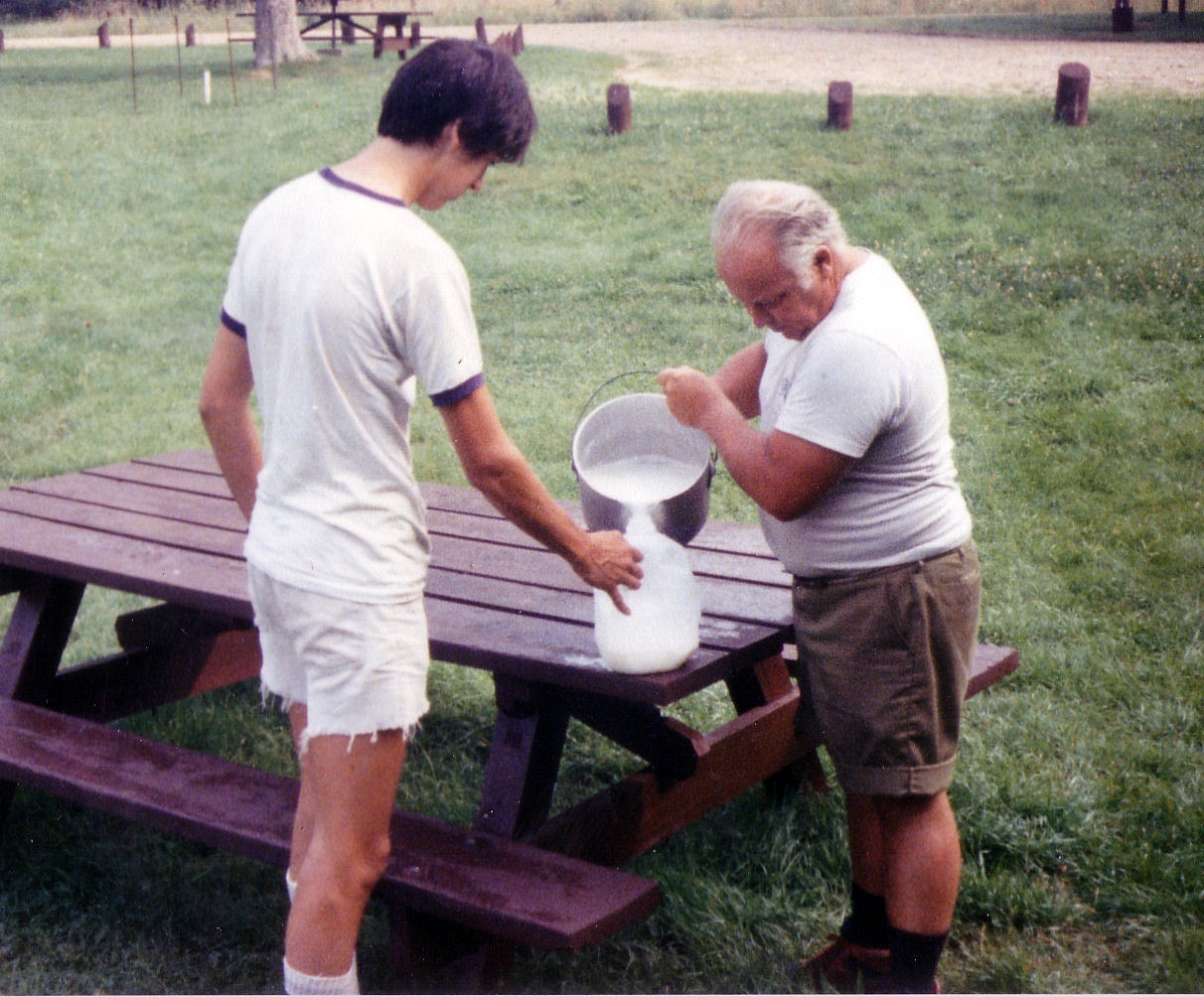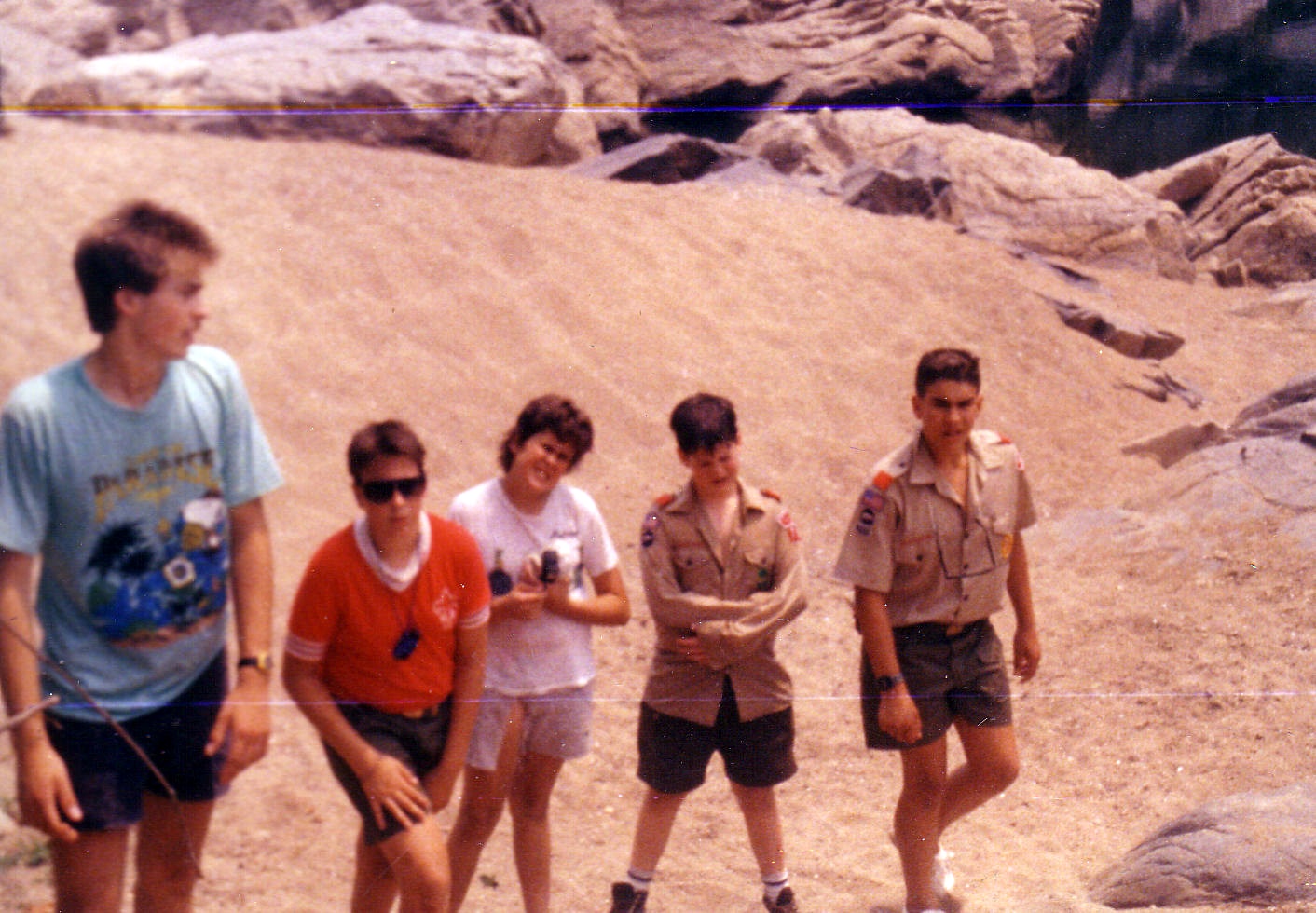HISTORY OF TROOP 1785
Formation
In the fall of 1976, Hal Zimmerman was looking for a troop for his son, Matthew. He was unimpressed with any of the troops in the area and petitioned Baltimore Area Council as well as Four Rivers District for permission to start one himself. In attendance at a meeting held to address this issue at Mr. Zimmerman’s house on Colston Lane off Lake Shore Drive were: Four Rivers District Commissioner Ev Ruhland, Hal Zimmerman, Larry Thomas, and Jim McCormick. Mr. Zimmerman was supported in his bid for a new troop but was convinced by Mr. Ruhland that the Mountain Road area had a plethora of troops with its five, whereas the Fort Smallwood Road area was lacking with only two. Since a cub pack already existed at Fort Smallwood Elementary School on Poplar Ridge Road and a troop had previously existed there, it seemed an ideal place to start another one. The Fort Smallwood PTA was supportive and agreed to sponsor the troop, giving the troop leadership the flag from the previous troop 785. The initial leadership of the troop consisted of Al Boffen – Committee Chairman, Hal Zimmerman – Scoutmaster, Larry Thomas and Clem Luberecki – Assistant Scoutmasters. The boys were: Mark Boffen, Matthew Zimmerman, Kent Thomas, Ned Luberecki, and Steve Bosse, all brand new Boy Scouts who formed the Flying Banana Patrol. The troop also received moral and financial support from the Poplar Ridge Community Association, which still allows the Troop Committee to meet in their Community Hall.
About six months after Troop 785 started meeting, Mr. Zimmerman was transferred to Louisiana and Mr. Thomas became Scoutmaster. The troop had grown to two patrols by then, the other being the Eagle patrol. About that time Jimmy McCormick, a Tenderfoot Scout from Troop 723, sponsored by the Long Point Community Association, transferred into the troop and became the ranking Boy Scout and the first Troop Senior Patrol Leader.
The Troop had a policy that they would have an outing once a month at a minimum. These outings were to be fun and challenging. Through the turn of the century the Troop had participated in every camporee and Klondike Derby that had been held since its existence. They also had a policy that it would be a scout lead troop, following the concepts of the Boy Scouts of America. Both of these policies are still in place today. With a variety of activities in an active program , the troop grew to about twenty boys and three patrols.
Troop elections have been held twice annually for the entire boy leadership. The first or second weekend after the new leaders were installed they would go to a Troop Junior Leader Training weekend where the new leaders would get the information they needed to perform their new jobs as well as work on the annual Troop plan. In addition the Senior Patrol Leader would usually go to a week of Junior Leader Training during the summer at Broadcreek Scout Camp.
Troop fundraisers primarily consisted of paper drives, aluminum can collection, spaghetti dinners, flower sales, and flea markets during the early days of the Troop. As the Troop grew the fundraisers became more varied. Among other ways of earning money the Troop has had car washes, sold hot dogs, hamburgers and funnel cakes at Kinder Park and the Garden Mart in Severna Park, has parked cars at Kinder Park and the Ham Fest in Howard County, sold pizza kits, and participated in the Baltimore Area Council’s annual popcorn drive. The Troop very early earned sufficient funds to fully equip the three patrols with tents, cook kits, stoves, lanterns, dutch ovens, rain flies and other patrol supplies. It has also been able to earn enough money to keep the equipment updated, to supply required materials for administration and advancement as well as to support some of the cost of Troop outings.
Mr. Thomas worked out a discount purchase plan between Spring River Outfitters and adults associated with the Troop. For a discounted price, adults would purchase used canoes from Spring River with the understanding that the Troop activities would take precedence in their use. Two K2 enclosed white water canoes were acquired from a disbanded explorer post, a canoe trailer was built by the adults, and canoeing became an integral part of the Troop program. Mr. Thomas had belonged to a rifle club and was an avid hunter. He wanted to teach the boys how to enjoy firearms and how to handle them safely and became a National Rifle Association Firearms Instructor. He instituted the Father/Son campouts during which the Troop would lease a rifle range and shoot a myriad of different firearms.
Winter sports can’t be left out. The Troop schedules a skiing trip usually during the Christmas-New Year week as well as a cold weather outdoor campout. Another activity that Mr. Thomas introduced to the Troop was rappelling. Although frightening, this is a very safe sport and one in which the Troop participates about one campout per year. The canoeing, shooting, skiing, and rappelling campouts are not the only ones to which the boys look forward. Wilderness survival, bicycling, spelunking, family camping, hiking, capture-the-flag, car racing at Summit Point, and a myriad of other themes keep the boys interested as well as the annual family picnic.
In 1989, after realizing some Troop communications were needed, Mr. Thomas started teaching an annual amateur band radio class with the intent of getting the members of the troop licensed to operate amateur band radios. Arrangements were made to have American Radio Relay League approved examiners appear at the last class so the attendees could be tested immediately upon completion of studies. Following the classes Mr. Thomas would take the participants to the Timonium Ham Fest so they could get their equipment. Two-meter “Ham” radio became the communication medium for the Troop from that time on. Many of the Troop wives and siblings also attended the classes and were licensed. At one time there were as many as 30 licensed radio operators associated with the Troop.
In 1990 the National Parent-Teacher Association (PTA) decided that sponsoring Boy Scout troops was not in their charter. This stand caused the Fort Smallwood PTA to question their sponsorship of Troop 785. Even though the Troop and District leaders were able to assuage their fears, the Troop decided to look for another sponsor. The Magothy Methodist Men were the perfect solution. Since the Fort Smallwood PTA was now sponsoring Cub Scout Pack 785 as well as Boy Scout Troop 785 and the Pack wanted to keep the PTA sponsorship, the Troop had to change its number. In order to show its previous association with the 785 number, the Baltimore Area Council was petitioned to give the Troop number 1785 when its sponsorship was changed. Today there are many documents that use “785/1785” to show the cohesiveness of the Troop with the change of sponsorship, as does the title of this paper. In 2022 changes to Scouts BSA insurance policies made it difficult for Methodist churches to continue to sponsor Troops. We continue to meet at Magothy Methodist but have gained a new sponsoring organization as of January 2023, the Second Alarm Brewhouse.
Bill Hastings, the Grandfather of Eagle Scout John Rios and a Troop Committee member passed away in 2001. Judy Hastings, his widow, requested that, in lieu of flowers, donations be made to Troop 1785 in his name. The resulting donations have been put into the Bill Hastings Memorial Fund.
High Adventure
Looking for more adventures and chances for the scouts to grow, Mr. Thomas conceived the High Adventure trips for the Troop. This was to be a bi-annual event with the Troop participating in a structured summer camp program in the alternate years. The first one was in 1984 when two patrols went to canoe the Allagash Wilderness Waterway in North Central Maine. Planning and fundraising for this event took two full years. Each scout was subsidized for the trip to hold individual costs down to $200. In order to hold down expenses, food was purchased, dehydrated by the Troop in homemade dehydrators, and packed by meal prior to leaving, Three meals; lunch, dinner, and breakfast, were packed together. All of the food for each patrol was packed into its own duffle bag. Even dehydrated, these duffle bags weighed well over two hundred pounds each. Fourteen scouts and six adults left Fort Smallwood Elementary School on Saturday, July 7 with four vehicles and a trailer full of canoes. Stops for the trip were made in New York, Connecticut, Battleship Cove in Fall River, Massachusetts to tour the Battleship and submarine there, and Pease Air Force Base just West of Portsmouth, New Hampshire where the Troop camped and fished and ate. The Troop finally arrived at the kick-off spot on Indian Pond at the headwaters of the Allagash River at 11:00 P.M after driving forty miles on logging roads and across a beaver dam. The next day one adult stayed in camp going over canoe techniques with the scouts and making last minute adjustments while the remaining adults drove the vehicles to the takeout point near the Canadian border. While getting water for the evening meal, two of the boys saw a large bull moose lay down in the woods. They came back to get the troop and tell the adult what had happened. The scouts were told that they had a good photo-op and to get their cameras. One of the boys tried to get too close to the moose, which caused it to get up and circle out onto the trail where the Scouts were standing. The moose walked the entire Troop back to camp, pausing to eat the leaves from the top of a tree that was more than nine feet high before swerving off into the woods, turning its head from side to side to keep his approximately five foot wide antlers from getting hung in the trees. The remaining adults returned after dark to an already prepared dinner and a whole Troop of excited boys. A total of twenty two moose were seen on that trip, two so close to the canoes as to startle both the moose and the canoeists. Indian Pond was the only place that the troop was allowed to camp together. From then on, the patrols functioned on their own for everything. After several days the Boy Scout patrol concept started working and the patrols became cohesive. It was a real revelation to see the boys working together and supporting each other. With rain almost every day the river stayed up and the canoeing was delightful. There was only one portage, one third of a mile around Allagash falls. Other highlights of the trip included sailing rafted canoes using the patrol dining flies as sails, wind scattering the canoes like leaves on a pond, a steak dinner prepared by the adults and a hike to the top of Mount Katahdin, the northern terminus of the Appalachian Trail. The last backpacker stove gave up while preparing lunch on that hike near the top of the mountain. Also, one of the boys had the nails in his boots come through the heels at the very top of the mountain. Yankee ingenuity and stone age cobbling combined to get him down none the worse for wear. Upon critiquing this trip, the scouts let it be known that the trip consisted of too much canoeing. Planning for future trips took this into account and all future high adventure trips were held to about four-five days of wilderness canoeing and as much variety as could be packed into a sixteen day trip.
Further High Adventure trips were:
1986: Pennsylvania canoeing the West Branch of the Susquehanna River from Shawsville to Renova. As it rained almost every day on the River there was water in Pine creek, which flows through the Grand Canyon of Pennsylvania near the New York border. A one-day, no equipment trip was offered on the day that was set aside for swimming. Exactly half of the boys and half of the adults accepted the offer. The canoes covered 20 miles of Pine Creek in about four hours which included time spent dumping water out of the canoes as well as time to eat lunch. After completing the canoeing the canoes were sent back with one of the returning adults while the rest of the Troop went west. A three day hike through a forest that had been devastated by a recent tornado made for difficult hiking but a horseback ride through a forest where much wildlife was spotted made up for that. Other highlights included a tour of Penn’s Cave, which was done by boat. The boat went completely through the mountain, turned around in a lake on the other side then returned to its starting point back through the mountain. The Troop also took a trip through Drake’s Oil Well, the very first oil well in Pennsylvania.
1988: West Virginia where the Troop broke a national drought when it rained 14 of the 16 days they were gone. The trip started with a hike over Billygoat Trail at Great Falls on the Potomac River on Saturday. The Troop was as far from the vehicles as was possible to be when the first rain to fall in 6 weeks came down with a vengeance. Leaving Great Falls the Troop went to Bealton, Virginia to camp as guests of the Flying Circus on their airfield. After the air show was over on Sunday they left for a long drive to Fayetteville, West Virginia. Upon arriving near midnight everyone moved into Indian teepees large enough for a Patrol each and passed out. On Monday the canoes were put in below Sandstone Falls on the New River. There was a pickup truck backed into the river with 4 fifty-five gallon drums in it, which a gentleman was filling from the River with a bucket. We were told that the water would be used to irrigate his garden. Within an hour of the Troop starting three days of canoeing to Thurmond a rainstorm hit with such fury that Mr. Thomas was able to fill his drinking cup in 30 seconds by holding it under the stream coming down from a tree branch. Since the Ohio and Mississippi Rivers were so low, the Army Corps of Engineers had opened Summerville Dam and the Troop got to raft the Gauley River, a prima dona rafting river. Instead of just horseback riding the boys were presented a horse clinic including a nail dressing and shoeing demonstration and they saddled up their own horses. The three-day hike was another layer of difficulty with the extremely delicate streams from which to get water and the downed brush that stopped one of the patrols the second day. The hike was across three mountains with the patrols setting off from opposite ends. The intent was to meet in the middle and trade car keys so that each patrol would leave in the vehicles that brought the other patrol. The inability to get water higher up in the mountains and the brush-bound patrol resulted in the scheduled radio check being used to create a plan B, hiking out the next day the way we came in. The Troop spotted some great rappelling cliffs and drove to a farmhouse to ask permission to use them. The aged farmer readily assented and asked if he could watch. After most of the Troop had been down the first time he asked if he would be allowed to do that. When told he could and a harness was produced for him to wear he said “I don’t want to do that, I only wanted to know if you would let me”. That activity had to be secured upon arrival of yet another thunderstorm. The Troop had contracted with some local spelunkers to lead a “wild cave” spelunking session. After being supplied with helmets, lights, and battery packs the Troop entered Organ Cave in Eastern West Virginia through the commercial entrance but were led past that area into the bowels of the cave, spending many hours there. The primary base camp was down a Class III road that, due to rain and usage, became a class IV and then a Class V road. On one of the last trips back the Troop convoy ran into a Ranger with a canoe. He looked at the line of vans and ended up backing about two miles to a turn-around spot. He told the leaders he wasn’t wild about that but wasn’t going to force the whole convoy back the other way. On the last night the boys had built a huge campfire. Shortly after it was lit, with the flames reaching more than 10 feet into the air, another furious rainstorm hit. In less than 10 minutes there was not a glowing ember in the fire. The next morning the creekbeds that had been dry for two weeks had flowing water. Rich Dobry turned 18 on this trip and a 2-layer dutch oven cake was prepared for a party to celebrate his birthday.
1990: Western North Carolina where The Patrols alternated canoeing the Little Tennessee River and hiking along the Tennessee border in the Slick Rock Creek area of the Nantahala National Forest. One day was spent on a canoe clinic led by Nantahala Outdoor Center instructors, followed by 7 miles of the Nantahala River in unloaded canoes for a great whitewater trip. Other highlights included a one-day hike through the Joyce Kilmer National Forest, mining for rubies, watching a play in Cherokee, N.C. and a drive to Georgia for a raft trip down the Chatuga River, the river made famous by the movie Deliverance. The two patrols were using 2 meter amateur band radios with which to communicate but one of the operators had let his batteries run down and the first communication session was a bust. By applying the concept of “use the resources at hand to accomplish the required task”, a wire that had been used to hold a sleeping bag to a pack and some flashlight batteries were “jury-rigged” to get power to the radio. At the next scheduled call time, after communications were established the only comment made was “I knew you would find out what happened and come up with a way to fix it”.
1992: back to Maine and the Allagash Wilderness Waterway, similar to the 1984 trip but the canoe trip was a little shorter. There were three patrols on this trip. This time the Troop stopped at the Old Rheinbeck Aerodrome on the way up to watch a WWI type of air show with really vintage airplanes and camped at one of the West Point bivouac areas. Upon arriving on the Allagash the canoes were put in at Chamberlain Dam to shorten the canoeing portion of the trip. In addition to climbing Mount Katahdin and stopping at Battleship Cove, that also allowed time for a whitewater rafting trip on the Kennebek River. One of the patrols was camped with a church group on Long Lake and rump-bumping as well as canoeing the breach in the dam. A girl from the church group got stuck on a log, was pushed by another member of that group, and ended up with a terrible gash across her gluteus maximus. The group had no first aid equipment so adults from the Troop were asked to assist and, after patching her as best they could, canoed downstream to get an EMT. She ended up being canoed out at dark upstream about 7 miles to a ranger station, leaving the group with one female counselor and two solo canoes for the remainder of the trip. After sharing their first aid kit with them the patrol adopted them to try to keep them out of further trouble. Two vans developed problems and the canoe trailer broke an axle all at about the same time, just about dusk while about an hour’s drive from the canoe put-in. The vans were patched sufficiently to get them to camp and the axle was removed and placed, with its tires, in the trailer. The parts were purchased to repair the vans on the return shuttle. The seventh, and last, good trailer tire was replaced on route 10 in Glen Burnie on the return trip.
1994: Sailing in Florida. This trip was a suggestion of Doug Martin, soon to become Scoutmaster. This was a “drive as far as you can as fast as you can” kind of trip. Camping was primarily at military bases and, where possible, eating in military mess halls. Sailboats were rented from Miami Harbor for a week of sailing around the Florida keys. Highlights included snorkeling some of the reefs, looking for lobsters, fishing (sailboats sail at a nice trolling speed!), swinging off of the sailboats on halyards to go swimming, exploring some of the non-inhabited keys and running around in the dinghies.
1996: West Virginia - very similar to the 1988 trip. This time the hike was through the Cranberry Glades Wilderness Area where the rains resulted in high water in the creeks, presenting several challenges to the hikers. Also the Troop contracted with a new spelunking group that had their own wild cave. The members of the Troop were supplied with clothing, boots, helmets, lights, battery packs and led down a vertical 20 foot drainpipe with reinforcement bars attached every foot for handholds to the bowels of the cave.
1998: North Carolina - very similar to the 1990 trip with the 1996 spelunking thrown in. The Troop base camp was Appletree Campground and, while one patrol was canoeing the Little Tennessee River and one was hiking the Slick Rock Creek portion of the Tennessee border, the campground was turned into a base for the hunt for Eric Rudolf, a fugitive wanted for several out-of-state bombings. The Troop returned to agents from the FBI, ATF, State Police, local sheriffs, and just about every other law enforcement agency in the campsite right next to theirs. There were cars with license plates from just about every state East of the Mississippi River, perimeter sensors, dogs, helicopters – all very exciting. Roger Barr and Kevin Martin had seen a plastic-wrapped cache while hiking and took that information to them. Roger and Kevin were back in just a few minutes asking for the Troop’s hiking maps, as the ones supplied by the agents were of a smaller scale. This time they were gone for about an hour and came back high as kites after giving the leaders of the task force a thorough briefing. Dan Conkling broke his toe and had to go home. The next day Tim Conkling was bitten by a spider. The time at the hospital took longer than expected and Tim was not allowed to get his leg wet. This resulted in a plan B decision for the rest of the patrol. They went canoeing on the Little Tennessee for only one day, spent the night in the Troop’s new base camp, and went back to Wildcat Falls for a day of swimming and fellowship with the other patrol that was hiking and camping near the falls. The rafting company could not supply sufficient guides for all of the Troop rafts so some of the Troop adults were asked to act as guides on the Chatuga River. After the trip some of them got job offers from the rafting company.
2000: Sailing in Florida - very similar to the 1994 trip. A real downpour that hit just as the boats were clearing the docks in Miami caused a bit of consternation as the boats were going through the channel in the company of a tug and barge with no visibility, but everything else went very smoothly. The largest Barracuda caught on the trip was 40 inches and the smallest was 36 inches.
2002: Maine - very similar to the 1992 trip with the swap of rafting the much more technical Penobscot River instead of the Kennebek River and the addition of a whale watching excursion. The Troop also spent the night on the battleship Massachusetts. Mark Pacek got a broken collarbone the night before they were to hit the river in canoes. A van that had gotten a flat tire just before getting to camp that day was used to try to get him to the hospital about 100 miles away, 80 of which was via logging roads. After getting two more flat tires it was decided to wait for help. About 5:00 A.M. a Canadian logging survey crew came by, took everyone to the Canadian border about 90 degrees from the intended route but supplied them with three additional tires and got them back to their van. One of those tires went flat before clearing the logging roads. While Mark was getting repaired in the hospital the van got four new tires.
2004: West Virginia - very similar to the 1996 trip. Each patrol had a black bear walk through their camp while hiking the Cranberry Glades Wilderness Area. One patrol also met up with a local troop that was rafting the New River and camping in the same area one evening. After the patrol members had pulled up their canoes and pitched camp they were invited to dinner, which was a real treat!
2006: Sailing in Florida with some changes. The Troop supplied all of the boat captains. The day they were to leave Pasadena they got word that two of the boats that had been reserved in Miami were not useable. The company had two sailing catamarans and a 41-foot sloop at Key West, which was several hundred miles further, but were available for the same price. As the reservations were set the Troop stuck to the original plan but got an early start on the last day down, still managed to pick up the people flying in to Miami, and made it to Key West before dark. Other highlights included a tour of Key West, visiting the Kennedy Space Center, and spending the night on, as well as dining on, the aircraft carrier Yorktown.
Chris Reed lead the troop to a High Adventure trip to Yellowstone National Park. We continue to revisit the Alagash in Maine and the New River in West Virginia, and we are hoping to add a new adventure to the roster. The troop has attended Philmont Scout Ranch twice. The troop has attended the invitation only West Point Military Academy Camporee in April for many years and is eagerly awaiting the invitation announcement this year.
Adult Leadership:
In 1998 Larry Thomas stepped down as Scoutmaster after having served the boys of Troop 785/1785 for over 20 years. In his wake he has left a legacy of business leaders, educators, public servants, military officers, and many other highly respected people who grew under his leadership. Assistant Scoutmaster Wayne Douglas Martin became Scoutmaster in 1998. Two years later Assistant Scoutmaster Donald Thomas replaced Mr. Martin and Doug became Assistant Scoutmaster again, a position he held for many years. Don Thomas was replaced by Lt. Col. Jon Leonard in 2002 and Don was again Assistant Scoutmaster. Col. Leonard was re-assigned from the Pentagon to Florida in 2006. Chris Reed brought his vast amount of experience and leadership skills to the troop as scoutmaster from 2006 to 2010. He continued to serve as an assistant for many years.
Our Recent Scoutmasters:
2010-2012 Jamie Maki
2013-2014 Mike Copper
2015 Doug Ashton
2016-2017 Sam Blase
And presently we are fortunate to have Mike Wangdahl lead the troop. Mike has brought many new activities and locations to the troop from his long scouting experience. The troop committee is comprised of parents and long time members. We can always use help and all are encouraged to attend our committee meetings which are held once a month, typically during the first scout meeting of the month. The Scoutmaster, the Assistant Scoutmasters, and the Committee are the resources and leadership examples the scouts access to lead the troop. The scouts lead troop 1785.
